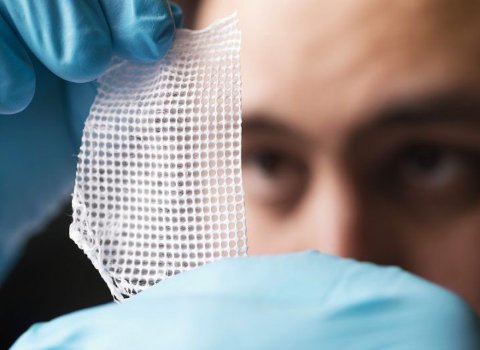For those living with chronic conditions such as epidermolysis bullosa (EB) – where the skin’s natural protection breaks down and it needs to be constantly covered in bandages – staying one step ahead of your symptoms can prove a daily challenge.
But now, a new €4m EU project with five different institutional partners – including the Science Foundation Ireland-funded research centre Cúram – aims to develop new advanced therapies and technologies in skin regeneration that could help those living with EB and other conditions.
The NanoGrowSkin project will involve a multidisciplinary healthcare approach to develop an improved chronic wound therapy.
Its goal is to develop a bioengineered human skin substitute, improving the manufacturing process, shortening the production time and enhancing its treatment effectiveness.
This is not the first example of artificial skin being used to treat chronic wounds and burns, but so far none of them have successfully reproduced the accurate structure and functions of the native human skin.
These artificial skins have also been linked to an increase in the risk of bacterial infection as well as showing low biological activity and low regenerative effectiveness.
That is why the NanoGrowSkin team is looking to do things a little differently by using advanced tissue engineering to manufacture skin from a patient’s body, with materials whose safety and efficacy have already been proven in humans.
Project goals
The first milestone of the NanoGrowSkin project will be the optimisation of human artificial skin models using nanotechnologies for medicine.
This will allow the development of biomaterials with improved and suitable biomechanical and antimicrobial properties for use in patients with burns and chronic wounds.
The project will also be looking to bring the technology within all the necessary European Medicines Agency guidelines, followed by developing an approach to bring the technology to the market at an affordable price.
Speaking of the project, Cúram director Prof Abhay Pandit said: “The most common conditions are wounds, pressure ulcers and burns, and current treatments based on the use of skin grafts, or even on implanting skin originating from a donor, are associated with several problems.
“We aim to overcome the two major drawbacks of severe skin wounds: the urgent need of an effective skin implant in life-threatening situations and to avoid/counteract usual bacterial infections.”
Colm Gorey
This article originally appeared on www.siliconrepublic.com and can be found at:
https://www.siliconrepublic.com/machines/curam-new-skin-chronic-wounds
